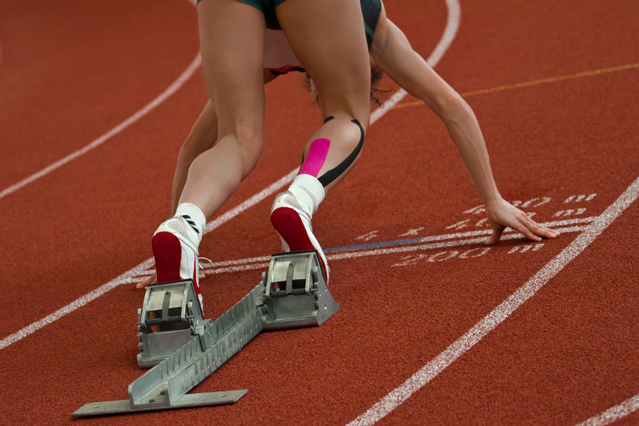Kinesio Tex tape is a brand name of elastic tape patented in 1999 and popularized during the 2008 Olympics after the manufacturer, Kinesio USA, donated 50,000 rolls of the tape to 58 competing countries. In Beijing, all eyes were on bikini-clad beach volleyball player Kerri Walsh, who wore Kinesio Tex tape on her right shoulder while she competed for her second gold medal.
According to Kinesio USA, Japanese chiropractor Dr. Kenzo Kase developed the tape and methods for applying it during the 1970s. The original idea was that the tape would lift the epidermis up slightly, allowing more blood to flow into the injured area for improved circulation and healing, Kase explained to The Guardian. Lifting the epidermis up would also relieve pressure on pain sensors located underneath of it, he said.
Kinesio USA also claims its product can be used to: re-educate the neuromuscular system, enhance performance, and prevent injury. Lumos, Inc., which manufactures another brand of elastic athletic tape called KT Tape makes similar claims. (Walsh now endorses this brand.)
A recent analysis of 10 studies conducted on the tape’s effectiveness found that Kinesio taping provided “trivial” pain relief, and inconsistent range-of-motion results. The article concluded that Kinesio tape “may have a small beneficial role in improving strength” and range of motion in certain injured athletes, but that there’s “little quality evidence” to support the use of Kinesio tape over other types of elastic tape to manage or prevent sports injuries.
Another recent study looked at the effect of Kinesio taping on performance of basketball players with chronic inversion ankle sprains (when the foot is twisted inward). That study found that Kinesio taping didn’t hurt performance, but it didn’t improve it much either.
The bottom line: Kinesio taping may offer some temporary pain relief and stability, but don’t expect it to work miracles. At about $10 to $15 per roll, the tape won’t put a hole in your wallet if you want to give it a try.


